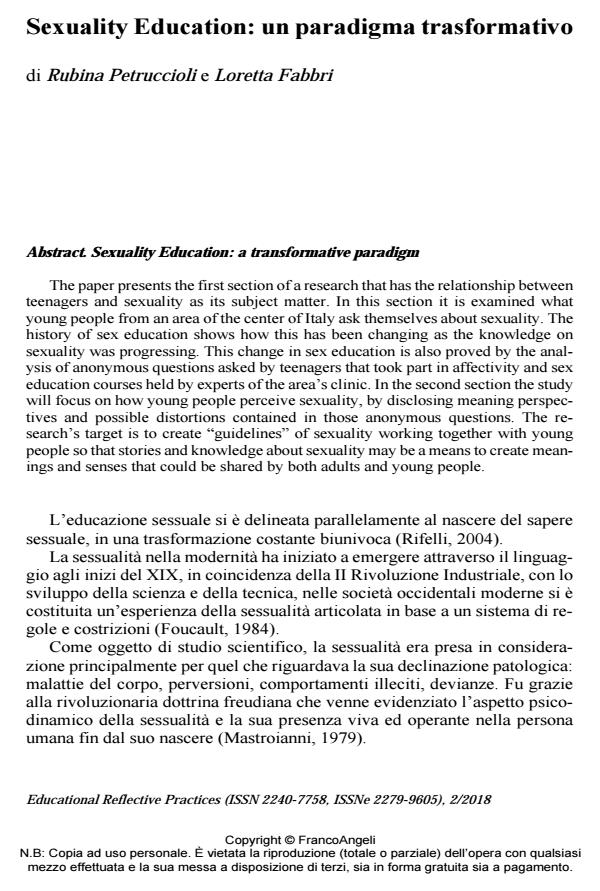Sexuality Education: a transformative paradigm
Journal title EDUCATIONAL REFLECTIVE PRACTICES
Author/s Rubina Petruccioli, Loretta Fabbri
Publishing Year 2019 Issue 2018/2
Language Italian Pages 23 P. 12-34 File size 230 KB
DOI 10.3280/ERP2018-002002
DOI is like a bar code for intellectual property: to have more infomation
click here
Below, you can see the article first page
If you want to buy this article in PDF format, you can do it, following the instructions to buy download credits

FrancoAngeli is member of Publishers International Linking Association, Inc (PILA), a not-for-profit association which run the CrossRef service enabling links to and from online scholarly content.
The paper presents the first section of a research that has the relationship be-tween teenagers and sexuality as its subject matter. In this section it is examined what young people from an area of the center of Italy ask themselves about sexuality. The history of sex education shows how this has been changing as the knowledge on sexuality was progressing. This change in sex education is also proved by the analysis of anonymous questions asked by teenagers that took part in affectivity and sex education courses held by experts of the area’s clinic. In the second section the study will focus on how young people perceive sexuality, by disclosing meaning perspectives and possible distortions contained in those anon-ymous questions. The research’s target is to create "guidelines" of sexuality work-ing together with young people so that stories and knowledge about sexuality may be a means to create meanings and senses that could be shared by both adults and young people.
Rubina Petruccioli, Loretta Fabbri, Sexuality Education: un paradigma trasformativo in "EDUCATIONAL REFLECTIVE PRACTICES" 2/2018, pp 12-34, DOI: 10.3280/ERP2018-002002